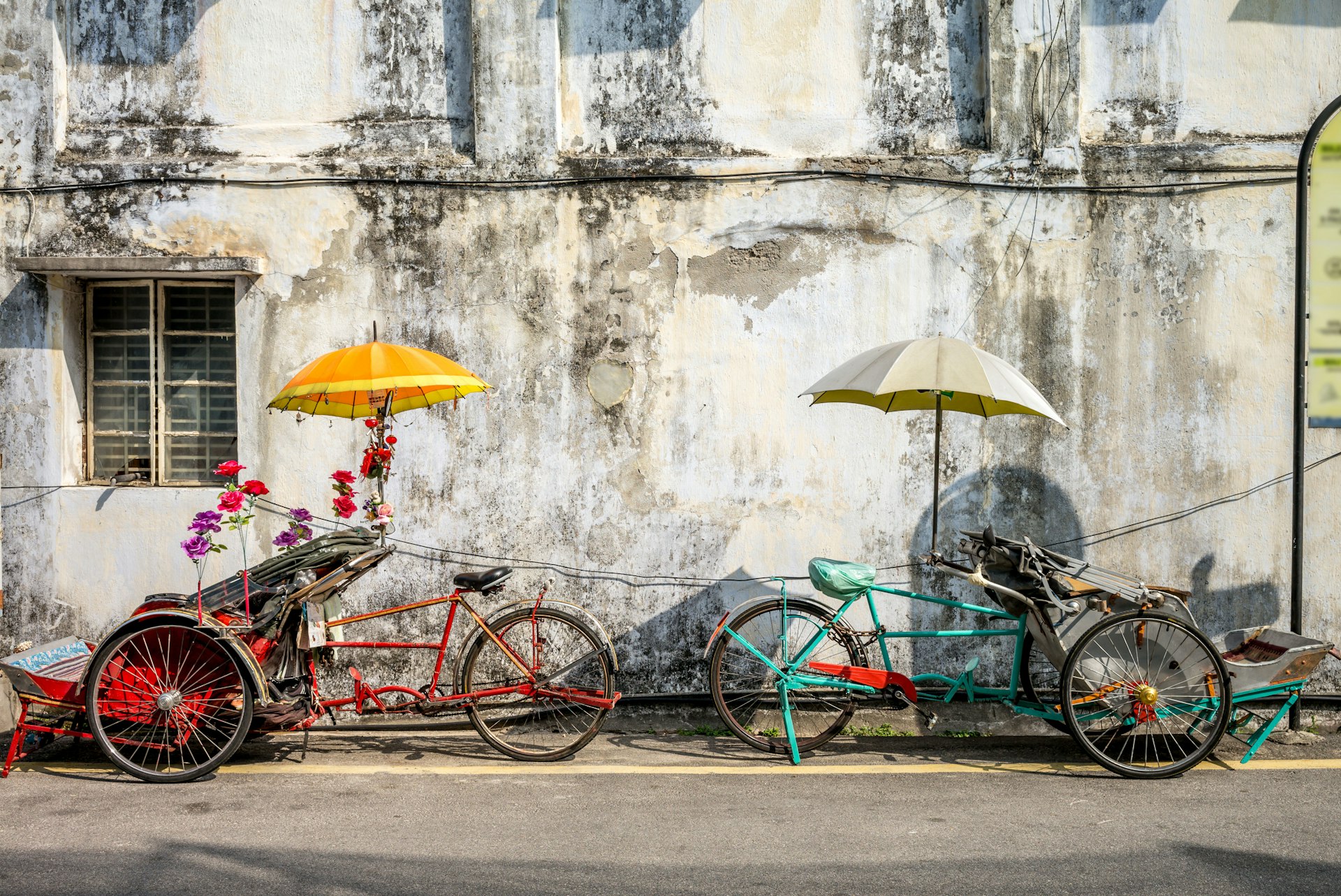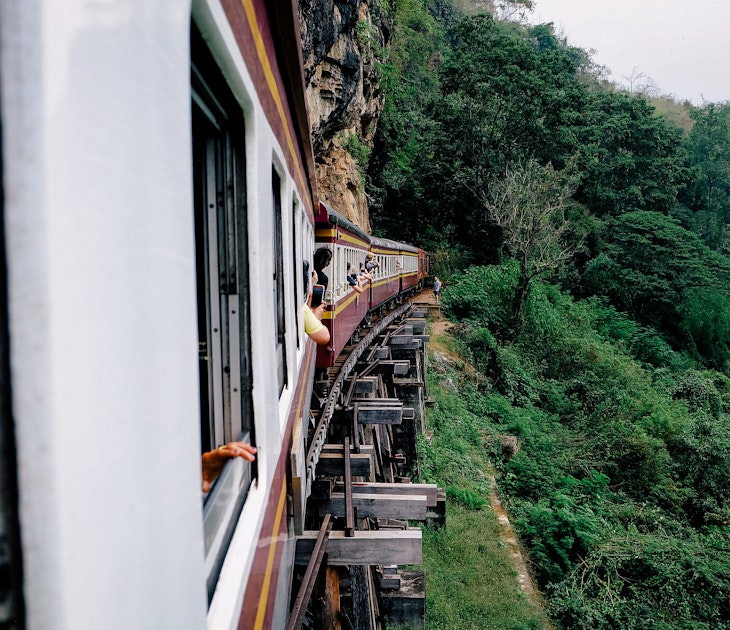Malaysia offers two countries for the price of one – cosmopolitan Peninsular Malaysia, with its historic cities, tea plantations, offshore islands and rich multicultural heritage, and rugged Sabah and Sarawak on the island of Borneo, where the travel gets less comfortable but more thrilling once you leave Kota Kinabalu and Kuching.
The good news is that getting around both parts of Malaysia is easy, though the speed, frequency, and comfort of travel can drop off once you reach Borneo. For easy connections and painless journey times, stick to the peninsula.
Here’s a guide to the best ways to get around both sides of Malaysia.
Tips for crossing between Peninsular Malaysia and Borneo
There are no direct ferry services between the Malaysian Peninsula and Borneo. It’s possible to island-hop through Indonesia by boat and bus, crossing from Java to Kalimantan (Indonesian Borneo) and traveling overland to reach Sabah and Sarawak, but in practice, almost everyone flies.

Fly to avoid slow, uncomfortable road journeys in Malaysia
While many travelers prefer to skip internal flights for environmental reasons, there are some journeys on Borneo where the choice is between a 45-minute flight and a 12-hour dirt road trip by jeep. To reach remote areas such as Gunung Mulu National Park and the Kelabit Highlands, a domestic flight with MASwings is by far the most practical option.
Flying is also the best way to travel between the Malaysian Peninsula and East Malaysia (Sabah and Sarawak). Frequent flights link the cities of the peninsula, and while Malaysia’s airlines have a questionable safety record, discount fares on Air Asia and Malindo Air – or even on the national carrier, Malaysia Airlines – can be tempting.
Take the train in Malaysia for calm comfort
Regular, inexpensive trains make it easy to zip between the towns of the Malaysian Peninsula, with easy connections to Thailand and Singapore. The West Coast line runs from Padang Besar on the Thai border to Johor Bahru, just over the causeway from Singapore, while the East Coast or “Jungle” Line branches off at Gemas and traces the east coast towards Kota Bharu in Kelantan.
Trains are less frequent than buses and cost slightly more, but they offer a calm, gentle ride through Malaysia’s lush tropical scenery, and pull into a string of historic British-built train stations in cities such as Kuala Lumpur, Ipoh and Butterworth. Services are operated by KTM using a mix of electric and diesel trains; second-class seats are perfectly comfortable for daytime hops.
Buses offer cheap, convenient travel at almost any time
Dozens of private bus companies jostle for trade in Malaysia, keeping fares low and services frequent. Konsortium Transnasional Berhad is the largest operator, but there are plenty of competitors. At any bus station, wander around the ticket hall to compare prices and destinations between companies.
Buses are typically fast and comfortable, with airline-style seats and air-conditioning so cold it can almost turn your mango juice into a frozen dessert (bring long sleeves or shiver). They’re also remarkably cheap, even on long routes, and leave to major destinations night and day – on the peninsula, you can often rock up and get a seat on a bus leaving within the hour to major destinations.
Longer trips on Borneo need more planning – there might be only one or two buses a day, so book in advance with travel agencies, online or directly with the bus drivers a few days before you want to travel.

Go by boat to reach island resorts and jungle outposts
Plenty of ferries buzz from coastal ports to islands such as Penang, Pulau Langkawi and myriad islands off the coast of Borneo. There are also international routes connecting Sabah and Sarawak via Brunei, but no direct services between Borneo and Peninsular Malaysia. On any sea crossing, check the location of life vests and emergency exits, and avoid travel in stormy weather (particularly during the monsoon).
Traveling by river in Borneo is one of Malaysia’s great adventures, though journeys here tend to be organized cruises rather than no-frills passenger-boat rides of the kind found in Kalimantan. Journeys up the Sungai Kinabatangan in Sabah are still hard to beat, with ample opportunities to spot wildlife en route. The three-hour river trip to Taman Negara National Park from Kuala Tembeling is another evocative jungle journey.
Rent a car for local sightseeing
Peninsular Malaysia is one of the few places in Asia where you might want to rent a self-drive car. Roads are well-maintained, road signs are clear and drivers broadly follow the rules (though you’ll want to give way to speeding buses and trucks). Avoid Kuala Lumpur’s tangled traffic system – stick to hiring a car in smaller towns for local exploring.
A license from home is usually enough to hire a car but most hire firms only rent to drivers aged 23 or over. Avis, Hertz and local companies have offices at airports and in popular tourist hubs. Expect to pay from RM190 (US$45) per day, including insurance. Parking lots and metered on-street parking are easy to find, sometimes with payment via an app.
Rent a moped for easy island exploring
Mopeds and small motorcycles can be hired inexpensively in popular hangouts such as the Cameron Highlands, Penang and Pulau Langkawi, and are great for local exploring. Bigger bikes can be hired in Kota Kinabalu, Kuching and Miri for tackling the tougher roads on Borneo.
A standard home driving license should be sufficient to hire a moped, but you may need a motorcycle license for larger bikes. Check the hire terms to make sure you have adequate insurance; most firms ask you to leave your passport as a deposit.
Local transport is convenient and inexpensive
Colorful rickshaws trundle around Melaka and Penang but most locals get around by city bus, taxi or rideshare. Malaysia’s taxi drivers don’t need much persuading to use the meter, but it can be hard to find a taxi away from shopping malls and transport hubs; summoning a rideshare via the Grab app is almost always the easiest option after dark.
Most big cities have cheap local bus services, and Kuala Lumpur has an extensive (though poorly integrated) system of overland trains, elevated trains, and a monorail. Out on the islands, it’s usually a choice between a taxi or a rented moped. On Borneo, Kuching, Kota Kinabalu other large towns have local buses and taxis.

Accessible transportation in Malaysia
For those with mobility issues, Malaysia can be a tricky place to travel. Where footpaths are present, curbs are high, routes are often blocked by construction work and crossings are few and far between, often involving climbing an overpass via stairs.
KL is perhaps easier than other cities, with wheelchair-accessible trains and stations, including the KLIA Ekspres train to the airport. Some buses are also wheelchair friendly, or you can use the door-to-door Rapid Mobiliti minivan service.
Elsewhere, use trains and planes for longer hops and taxis for local trips, or contact specialist tour operator Ace Altair Travels. For more information on accessible travel, see Lonely Planet’s Accessible Travel Resources page.
Why boats are my favorite way to travel in Malaysia
Sure, the trains are stress-free and buses go everywhere, but boats are the most evocative way to travel in Malaysia, whether that means riding the ferry from Butterworth to Penang or chugging like a latter-day jungle explorer up a turgid river in Borneo.
If I had to pick one trip, it would be a cruise up the Sungai Kinabatangan in Sabah. This vast cocoa-brown, crocodile-infested river coils inland from the coast near Sandakan, and every python turn offers a chance of spotting orangutans, proboscis monkeys, hornbills and other big-ticket Borneo wildlife.
You may also like:
Malaysia is building a trio of sustainable biodiverse islands for people to live on
12 best things you have to do in Singapore
Climbing Mt Kinabalu, Borneo’s biological treasure trove














